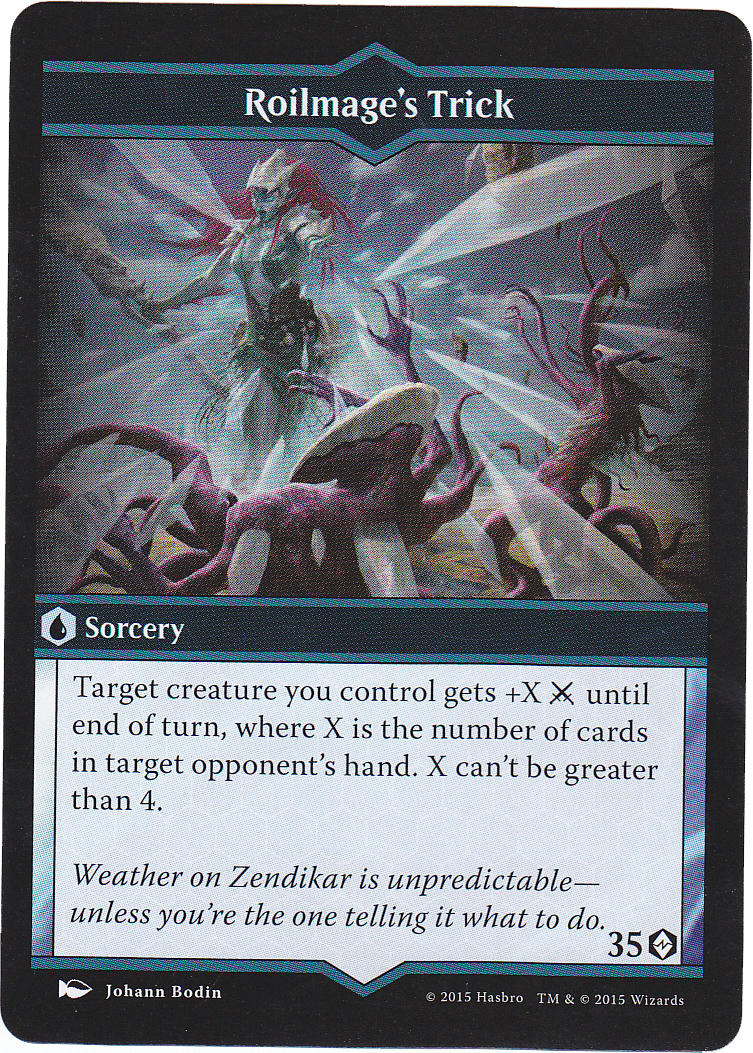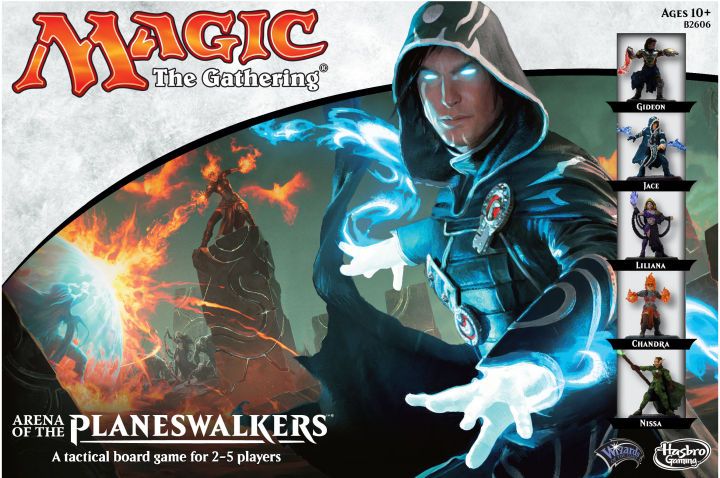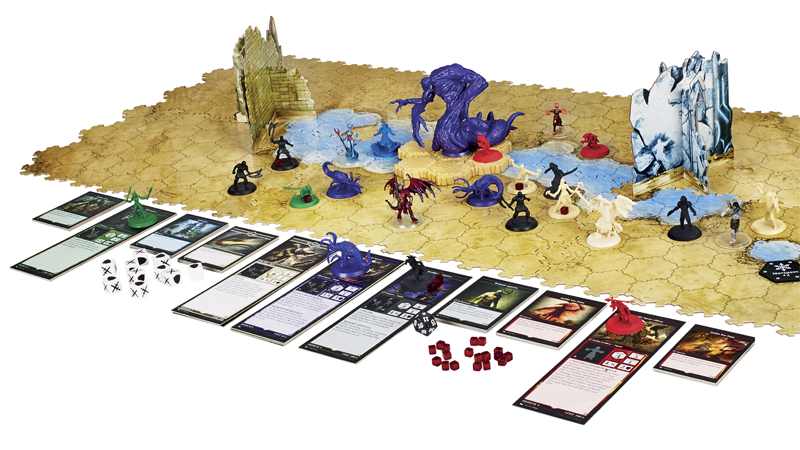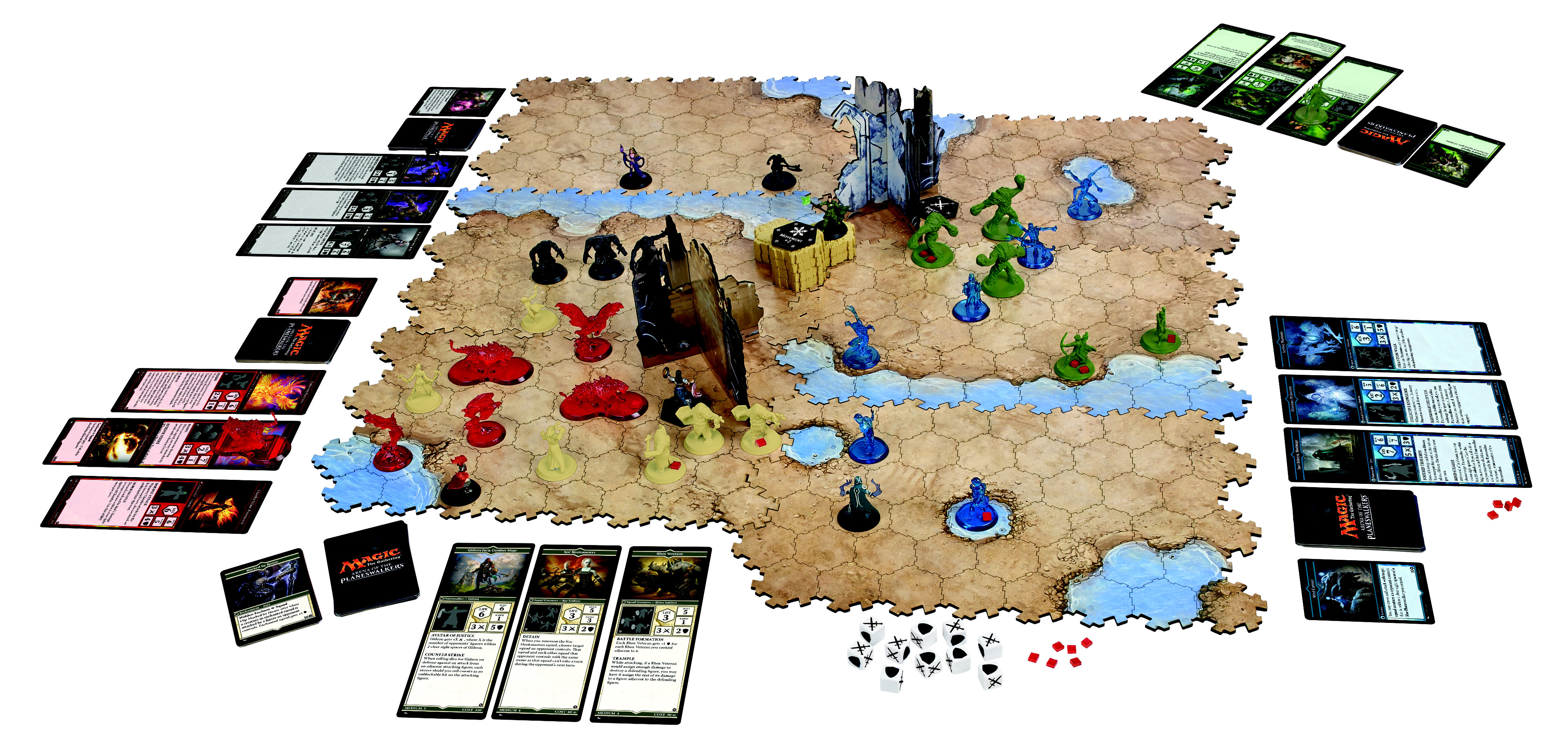This won't be nearly as long or as detailed as my other reviews, but I feel that this is a game worth sharing.
Like most stereotypical nerd types, my interests in games cover both
video games and tabletop games. I’m not a big fan of resource management
games like Scythe, Settlers of Katan or Terraforming Mars. I favor the direct approach, with games all
about taking your skills directly to the other players in games of wit and
excitement. Games like Arcadia Quest, Zombicide, the Resident Evil Deck
Building Game, Epic Spell Wars of the Battle Wizards and Tragedy Looper. Among all the board games I play, one that is
consistently my favorite is Magic the Gathering: Arena of the Planeswalkers.
None of that matters either way because Arena of the
Planeswalkers renders a lack of expertise in the card game a moot point. It is only Magic: the Gathering in spirit and
knowledge of the card game is not needed. Those who don’t play the card
game can still appreciate the game on its own, while those who do play it will
definitely appreciate the translation into an action-oriented board game.
In either case, Arena of the Planeswalkers’ rules are very
easy to get into, making for a perfect example of being simple, but deep.
Each player takes control of one of MTG’s planeswalkers characters,
mainly the particularly promoted ones.
The planeswalkers are a player’s focal point because they have the
ability to summon their creatures to the field and use magic. If they
die, the player can no longer do either of those things. Once per turn, players move their
planeswalker, heroes and three-man squads around the hexagonal field and make
attacks in accordance to their stats. In
other games, stats are where things can get overwhelming, but this one keeps it
straightforward. Movement is how many spaces they can move, range is how
far they can attack, ect. Combat is also
standard and straightforward. Roll a die
for each attack point, subtract hit results from the defending player’s block
roll results and deal damage in the difference.
There are a few variances like elevation advantage and line of sight,
but never anything that deviates from the basic setup.
 |
| Jace is my favorite, but blue magic is notoriously esoteric. |
Players can get the hang of it in as little as two turns.
It’s when abilities and spells come into play to enhance it when the game
opens up. Each player has a deck of 12
cards consisting only of colors matching their planeswalker. Before and
after using one of their units, players can use spell cards in their hands,
taken straight from the card game, but repurposed for the game’s rules. The card mechanics are less like Magic though
and more like Yu-Gi-Oh. Cards come in three types: sorceries are one-use
cards, kind of like normal magic cards in Yu-Gi-Oh, enchantments provide buffs
(or debuffs, in Liliana’s case) on units, kind of like equip cards, and hidden
enchantments are played face down on a unit until triggered by something, kind
of like trap cards. Magic cards have a wide range of abilities and the
combo potential in how they’re used with other cards or a creature’s abilities
is what makes the game really shine and allows players to turn the tables with
the right tactics and timing.
For example, at one point I was able to make one of my squad
creatures’ attack rise to 11, when 8 is already considered abnormally powerful.
Taking advantage of my dual-colored planeswalker Kiora, I first used Anticipate,
which let me and my opponent draw two cards.
Then I activated Roilmage’s Trick, which boosts a creature’s attack
based on the cards in the opponent’s hand, then finished off the combo with
titanic growth, which boosted its attack further. With one hit rolling a
whopping 11 dice, my enemy’s planeswalker Gideon went from full health to one
after a good defense roll. He was able
to recover from it, however, using two different cards that allowed him to
heal. It’s that kind of playing that
keeps a game’s pace up.
 |
| Gotta love those flavor quotes. |
Every planeswalker has radically different methods and there
is a ton of replay value in seeing how the strengths and weaknesses of the
different planeswalkers and units match up, helped in large part to the solid
number of them. If you get the base game
and the two expansions like I did, that’s a total of 11 distinct planeswalkers
and over 100 cards. Combine the cards with wildly varying creatures with
their own special powers and every game becomes wholly unique, requiring some
thinking on the fly.
To just give a sample, these units include wolf men with two
forms, phoenixes and zombies with resurrection abilities, phantoms that can
move right through enemies, a flying field captain that carries units, a
titanic cthulu monster four times the size of any other figure, giant tree
monsters, a crazed prophet with the “incessant rambling” ability I strangely
relate to, brainwashing cultists, two different vampire squads, an alchemist
with a magic-powered gun and rhino men that form a sturdy defensive line.
True to the card game, it’s got a little bit of everything. So much goes on that it’s almost a necessity
to start explaining how characters are supposed to be and what cards do when
used in tandem with each other. Again,
very reminiscent of pre-Duels Monsters Yu-Gi-Oh. It’s like a combination of Duel Monsters and
Capsule Monsters chess.
Points also apply to the cards in each deck. A deck of
12 cards totaling 200 points is the requirement. In addition to balance,
these point limits also facilitate the scoring system, where you can optionally
play for a set number of turns and then add up the points of all cards and
figures each player still has on the field, hand and deck. That way
there’s no way a player can have the edge for such a scenario.
That’s all well and good for a game balance system, but what
really impresses me about the balance is how every character is overpowered and
it creates a sort of balance in that. Every planeswalker and the
creatures they use have incredible methods of totally decimating
opponents. Gideon can fortify defenses
to absurd levels, Chandra can bypass defenses with her spells and kill enemies
in one hit, Jace can mind control units and use other player’s cards, Liliana
can cripple enemy forces to the point of near uselessness in a straight-up
fight, elf rangers can hit & run with the most movement, the cultists can
revive themselves by killing enemies… There are a lot of ways to win, and when
everyone is powerful, it’s all a matter of outplaying your opponent using the
power you have. That leads to AOTP always having a sense of it being an
epic clash where it’s anyone’s game.
Having three to four players in a free-for-all can make
things especially deep. It’s one thing to unload all your units on
another player, but it’s quite another when you have to consider saving cards
for another player and position units accordingly. The games have a few maps in the manual using
the game’s tiles that work well enough, but they can be positioned and adjusted
freely. The only complaint I have about
the game as a whole is that the titular arenas don’t have a lot going on. If there’s one thing Arena of the
Planeswalker could have helped with, it’s more variety in the playing field.
For a game that has rules regarding elevation advantage and
terrain height, it sure doesn’t have a lot of either. Boards are flat
tiles with the only type of land being regular plains and water. Water adds a bit to the game as a hazard
because a unit that moves into water must stop their movement on it and it
counts as -1 elevation. The Shadows Over Innistrad expansion also adds
road spaces that let you move two more spaces if you begin and end movements on
them. That’s good for a foundation, but
not much is added onto it. The base game
only has four terrain pieces, two for a single space and two that cover three
spaces, meaning at most you can get a little hill on one part of the map or a
few patches. Other than that the only obstacles are two large
cross-shaped ruins for cover. Shadows Over
Innistrad adds a few more terrain pieces, most of which are for Nahiri’s lithomancy,
but its bigger contribution is cryptoliths, giant structures flying characters
can land on and can be knocked down.
There are a few modes the expansion has utilizing the cryptoliths, but
they get in the way more than they enhance the game.
I understand not wanting to make the terrain too complicated
so as not to lose focus on the core game, but some options would have helped.
It’s been suggested by many players that people buy terrain from the game
Heroscape to use with Arena of the Planeswalkers, since Heroscape uses the same
core rules, the terrain pieces are the same as AOTP’s and both games were made
by the same people. Heroscape terrain can be stacked in vast numbers and
come in all kinds of variety for infinite possibilities. It would certainly enhance the game if you
have any, but I still think Arena of the Planeswalkers holds up on its own.
If there were any board game I would recommend to any player
it’s Magic The Gathering: Arena of the Planeswalkers. The action is fast, the rules are
well-grounded, the variety in ways to play is the biggest I’ve seen in a board
game yet and the details in the art and figures are pretty to look at to boot. Copies of it and the expansions can be found
for relatively cheap so if you find one it's probably worth whatever
price they’re asking for it. I give
Magic the Gathering: Arena of the Planeswalkers an 8.5 out of 10.





No comments:
Post a Comment